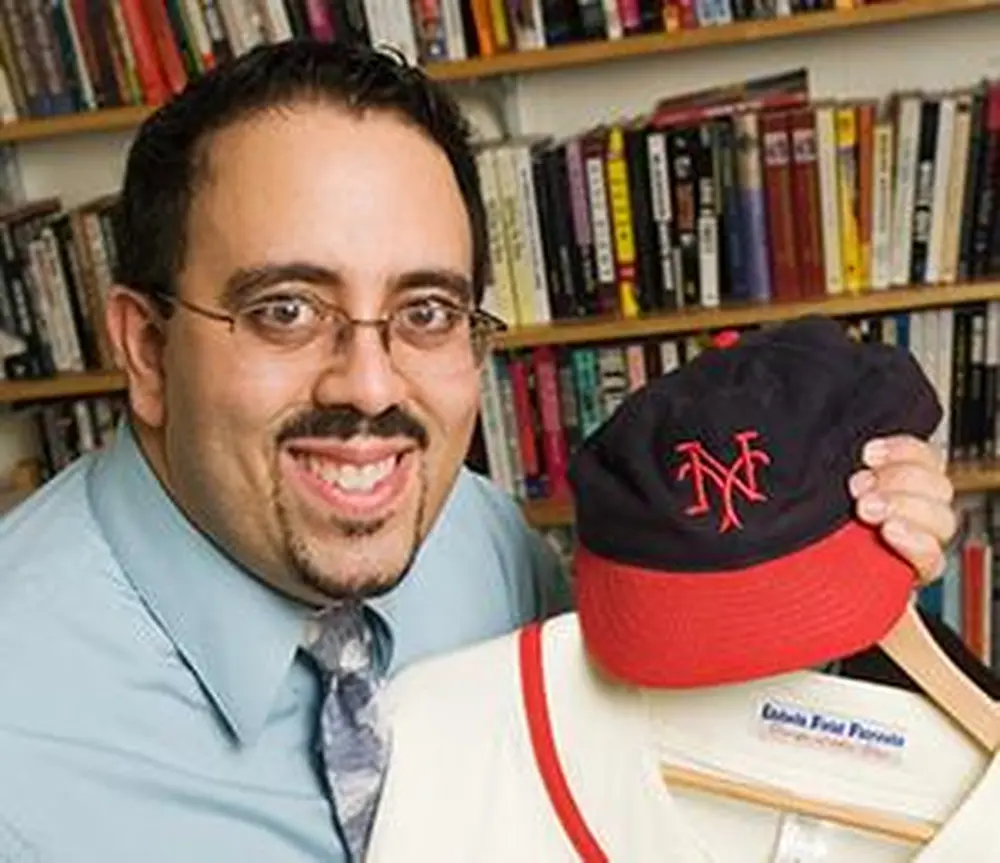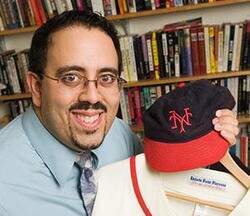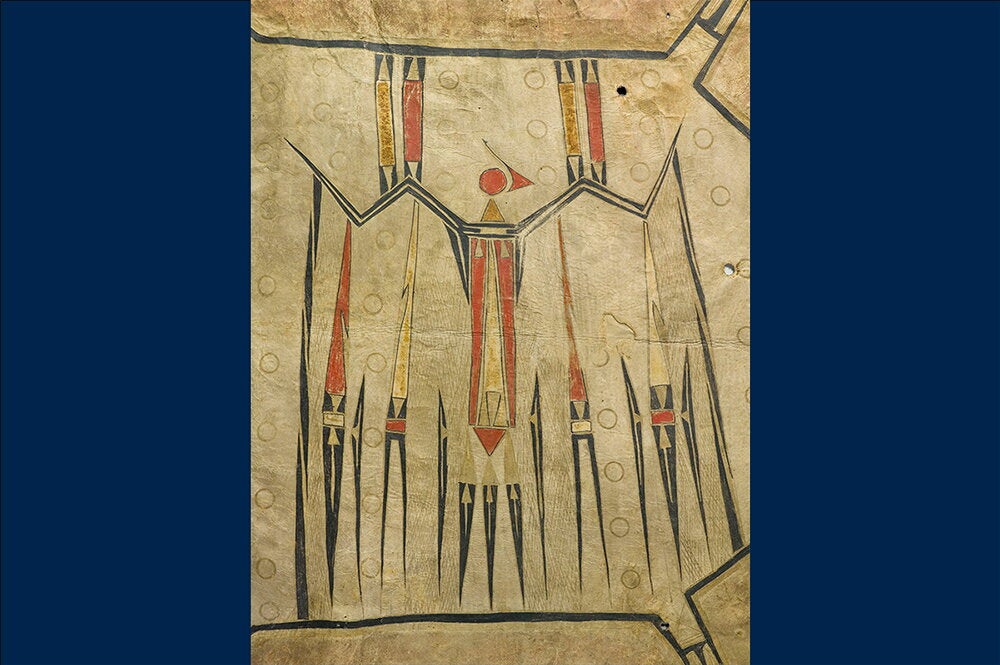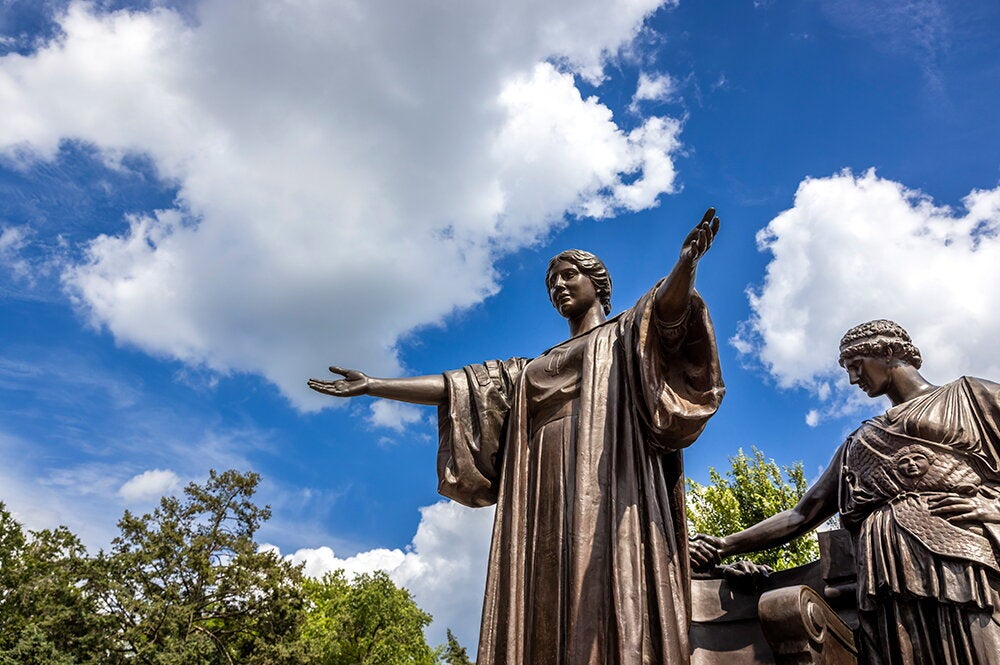

With the recent release of the movie 42, many are reflecting on Jackie Robinson as a symbol that anyone can succeed if given the opportunity. A baseball historian at U of I, however, points out that racial integration of Major League Baseball (MLB) was far more complex than many of today’s storylines reveal.
There’s no doubt that the recent Hollywood hit brought to life the trials that Robinson faced on the field as MLB’s first black player. Professor Adrian Burgos Jr., also a member of MLB’s Baseball Origins Committee, says that Robinson overcame “institutionalized” racism during his 1947 debut with the Brooklyn Dodgers.
During his first season, for example, Robinson was hit by more pitches than any other player in the majors.
“By season’s end, Robinson had become a hero to millions of Americans from all racial and ethnic backgrounds due to how he responded to this intense public trial by fire,” says Burgos Jr., in an interview with the U of I News Bureau.
But for all of the drama surrounding his first season, Robinson’s ordeal was just part of how the game was changing color, Burgos Jr. says. For example:
- Another black player, Larry Doby, started playing for the Cleveland Indians the same season as Robinson, but he is not as widely remembered as he started playing later in the summer.
- While Robinson was the first “unambiguously” black player to break the color line in MLB, there were already non-white players—primarily lighter-skinned Latinos—in the league, such as Cuban Roberto Estalella and Adolf “Dolf” Luque. More than 50 Latinos played in MLB between 1889 and 1946, not including Hall of Famer Charles Albert “Chief” Bender, an American Indian. Robinson did help open the game to darker skinned Latinos, Burgos Jr. adds.
- Brooklyn Dodgers president Branch Rickey, in righting what he saw as an injustice in baseball, initially wanted to sign three black players—Robinson, Roy Campanella, and Sam Jethroe—but he was not so willing to pay for their talents. He dropped Campanella and Jethroe from his plans when the Negro League owners with their contracts insisted on being compensated.
Burgos Jr., who got an advance look at 42, calls the film “as compelling an integration story as the movie industry will offer the American public.” Beyond 1947, he adds, Robinson became a larger public figure than just a baseball player.
With his growing popularity in the early 1950s, Robinson became involved in politics. He testified before the House Un-American Affairs Committee of the McCarthy era to impugn black singer and activist Paul Robeson, though Robinson later regretted his actions.
Robinson supported Richard Nixon over John Kennedy in 1960 and stayed with the Republican Party when many African Americans were switching their allegiance to vote Democrat.
As for baseball, Robinson was deeply disappointed over the lack of racial integration off the playing field. Citing the absence of any black managers in the major leagues, Robinson initially refused to attend a 25th anniversary celebration of his first season during the 1972 World Series.
Robinson agreed to appear only after Commissioner Bowie Kuhn promised him that MLB would work toward hiring a black manager, Burgos Jr. says.
“At the celebration on October 10, 1972, a feeble Robinson, his body ravaged by diabetes, spoke publicly for the last time, stating that he looked forward to the day that he would see a black manager in a major league dugout,” Burgos Jr. says. “Ten days later, Robinson died, still awaiting that day.”
In 1975, Frank Robinson made his debut as MLB’s first black manager, for the Cleveland Indians.


